Abstract
As the end of the twentieth century approaches new methods are needed for the treatment and control of tuberculosis. Vaccination needs to be rethought, and BCG either improved or replaced. Chemotherapy is no longer enough to meet the needs of impoverished countries, non-compliant patients, and increasingly drug-resistant organisms. The next major step forward should logically come from immunology. Following the clear differentiation of two pathways of cellular immune response to mycobacterial challenge, and the recent description of two functional types of helper T cells, ideas of what controls them have allowed the logical development of a potential new vaccine and a new immunotherapy. These are based on a killed environmental organism, Mycobacterium vaccae NCTC 11659. With this simple preparation together with chemotherapy we may be armed as never before to face the inevitable challenge that tuberculosis will present to the twenty first century.
Parallels recognised between cell death in tuberculosis and infection with the human immunodeficiency virus open the possibility that the progress made in immunotherapy in tuberculosis might be applicable to HIV. If this proves the case then we may also have control over the latest, and worst, risk factor for tuberculosis at the time we need it most.
Full text
PDF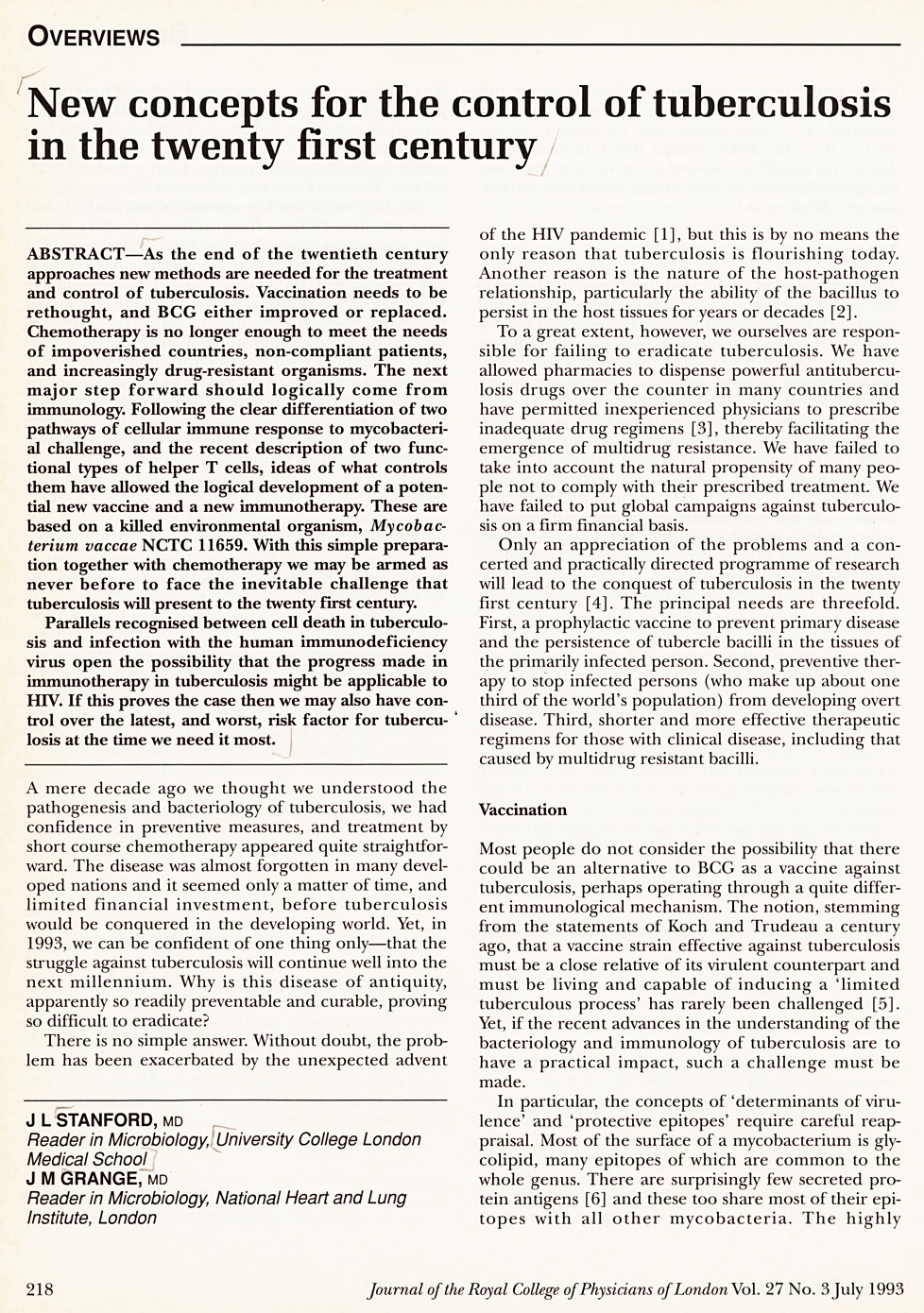
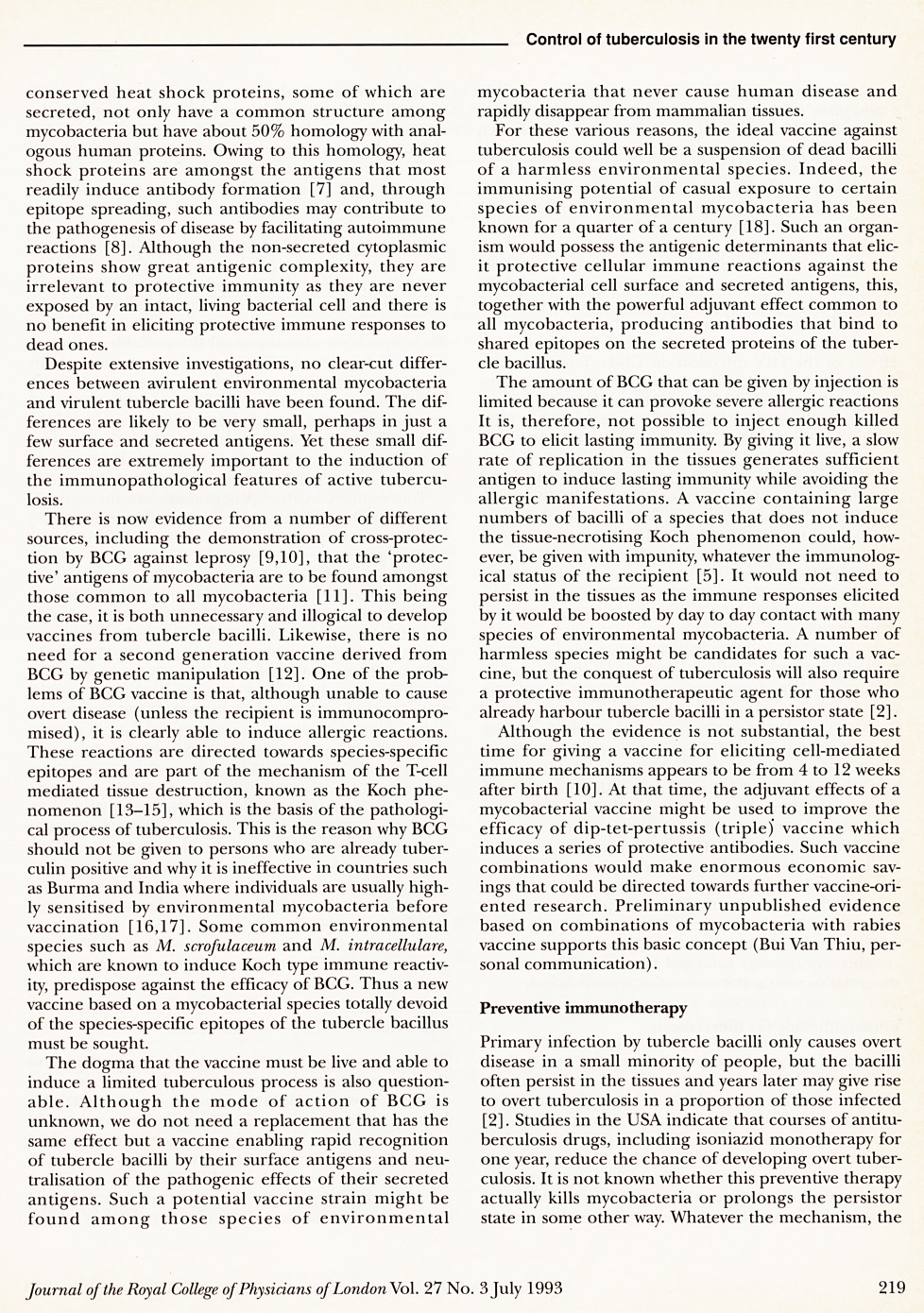
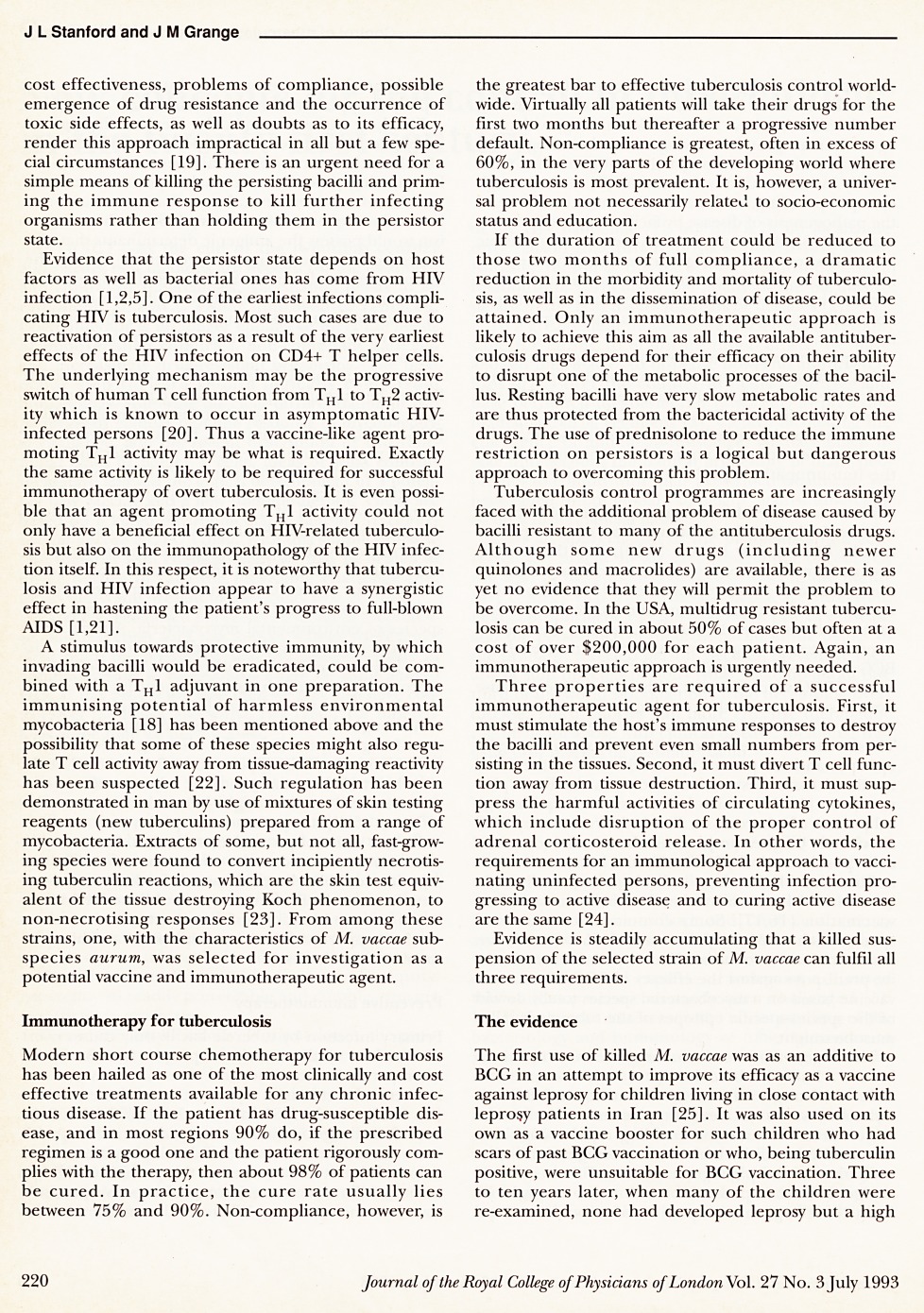
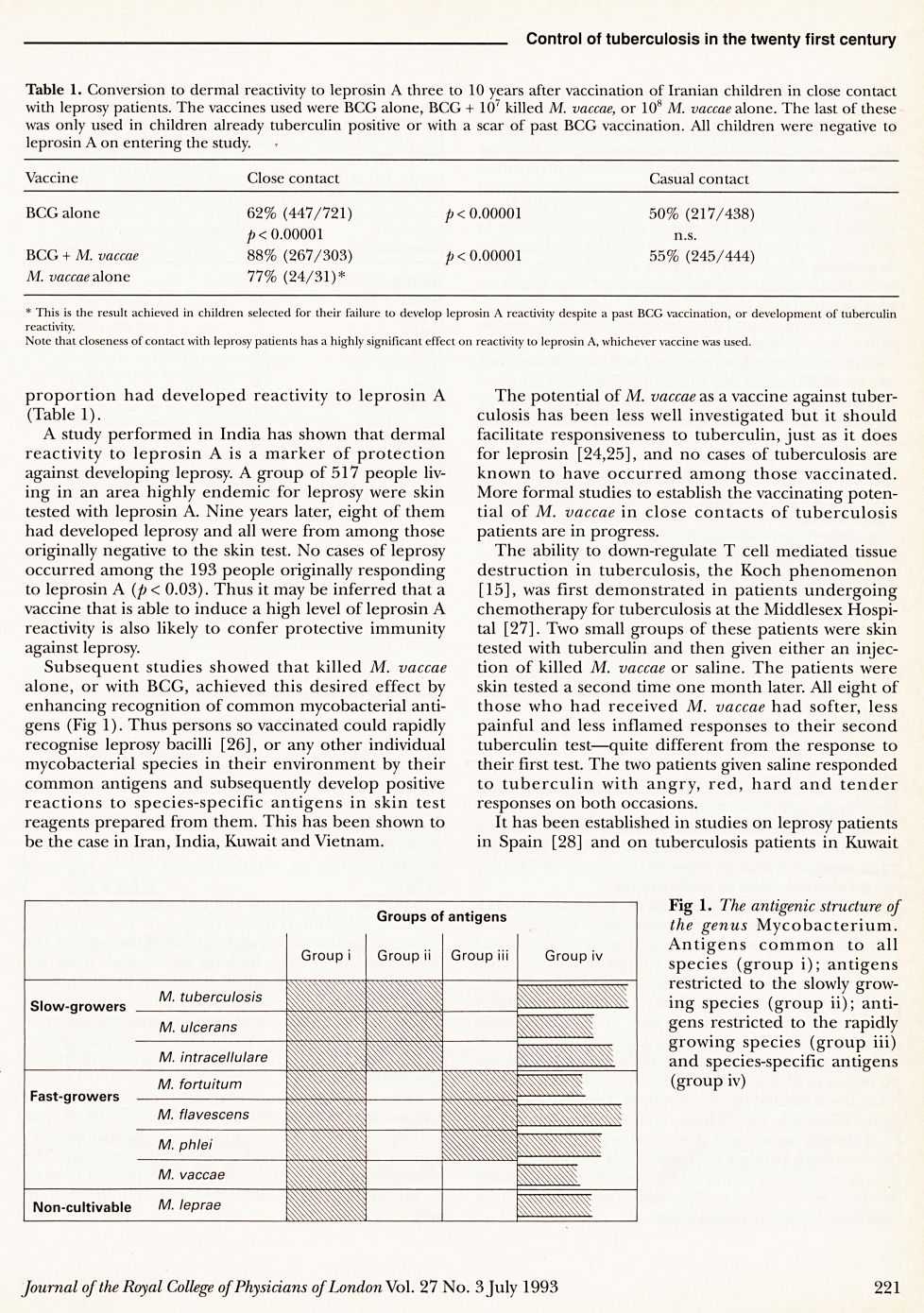
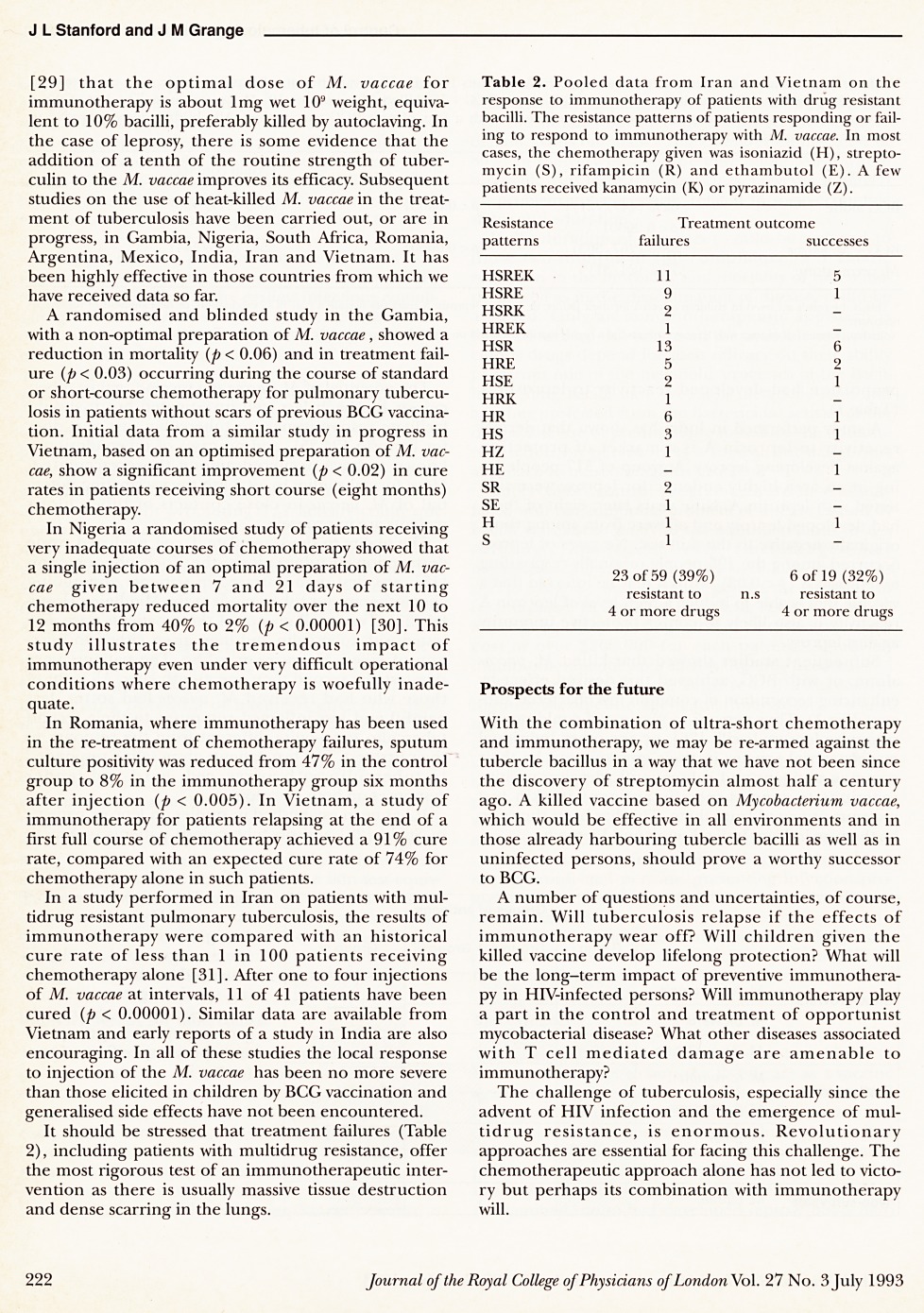
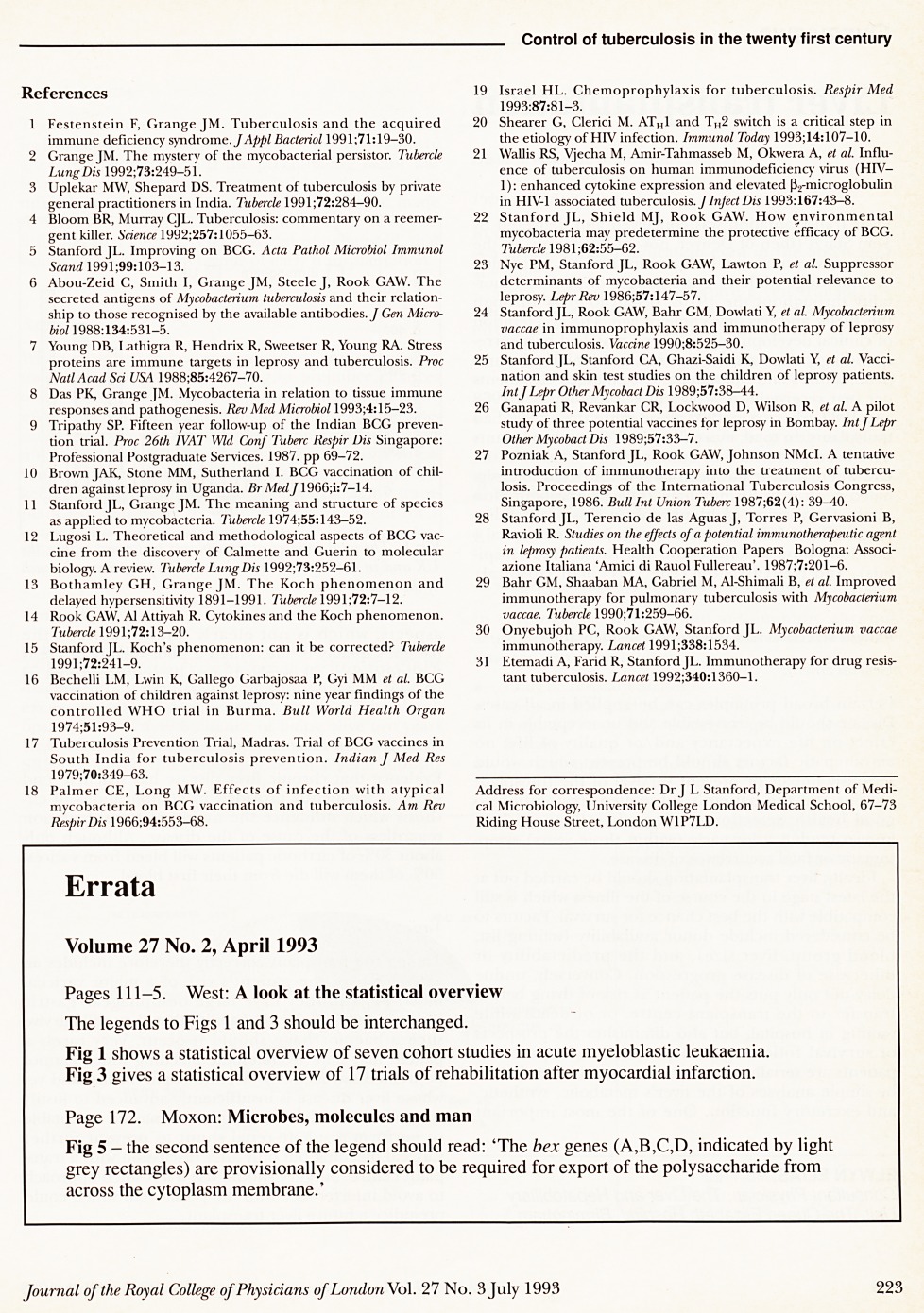
Contributor Information
J L Stanford, Reader in Microbiology, University College London Medical School.
J M Grange, Reader in Microbiology, National Heart and Lung Institute, London.



